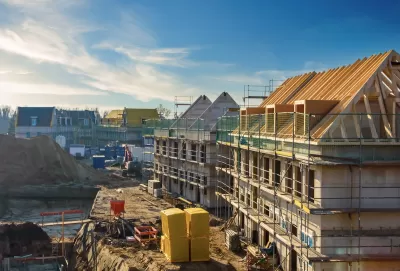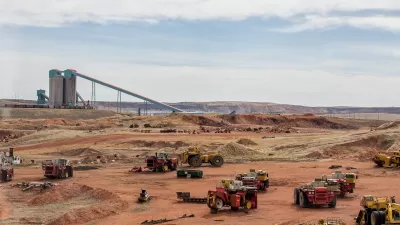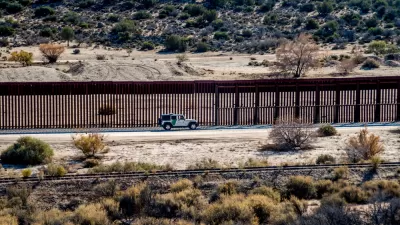Many affordable housing developers worry Trump’s proposed taxes on imports and crackdown on immigration will be detrimental to the industry. Others hope deregulation reduces development costs enough to offset those effects. What’s the most likely outcome?

Housing industry experts warn that President Trump's Day One executive orders and promised policies could severely impact affordable housing development through a combination of immigration enforcement and trade policies. According to a new Shelterforce investigation by Shelby R. King, the affordable housing sector faces unique vulnerabilities to these changes.
Key takeaways:
- Proposed 25 percent tariffs on Canadian and Mexican imports, plus 60 percent on Chinese goods, could significantly increase construction costs. The National Association of Home Builders estimates a 10 percent tariff would add $3.2 billion to building material costs.
- Mass deportations could exacerbate the existing construction labor shortage, particularly impacting affordable housing developers who often can't compete with luxury developers for scarce workers.
- While the administration promises deregulation will lower costs, experts question whether regulatory cuts could offset rising material and labor expenses. Most impactful regulations are local, not federal.
- Affordable housing developers face tighter margins than market-rate developers and can't simply raise rents to absorb higher costs. Housing Partnership Network warns of potential "widespread bankruptcies" if costs continue rising without additional resources.
The article features insights from industry leaders including the National Housing Conference, Housing Partnership Network, National Association of Home Builders, and housing policy experts who explain why affordable housing development could be particularly vulnerable to these combined pressures.
FULL STORY: How Might Tariffs and Deportations Affect Affordable Housing Development?

Planetizen Federal Action Tracker
A weekly monitor of how Trump’s orders and actions are impacting planners and planning in America.

Congressman Proposes Bill to Rename DC Metro “Trump Train”
The Make Autorail Great Again Act would withhold federal funding to the system until the Washington Metropolitan Area Transit Authority (WMATA), rebrands as the Washington Metropolitan Authority for Greater Access (WMAGA).

The Simple Legislative Tool Transforming Vacant Downtowns
In California, Michigan and Georgia, an easy win is bringing dollars — and delight — back to city centers.

The States Losing Rural Delivery Rooms at an Alarming Pace
In some states, as few as 9% of rural hospitals still deliver babies. As a result, rising pre-term births, no adequate pre-term care and harrowing close calls are a growing reality.

The Small South Asian Republic Going all in on EVs
Thanks to one simple policy change less than five years ago, 65% of new cars in this Himalayan country are now electric.

DC Backpedals on Bike Lane Protection, Swaps Barriers for Paint
Citing aesthetic concerns, the city is removing the concrete barriers and flexposts that once separated Arizona Avenue cyclists from motor vehicles.
Urban Design for Planners 1: Software Tools
This six-course series explores essential urban design concepts using open source software and equips planners with the tools they need to participate fully in the urban design process.
Planning for Universal Design
Learn the tools for implementing Universal Design in planning regulations.
Smith Gee Studio
City of Charlotte
City of Camden Redevelopment Agency
City of Astoria
Transportation Research & Education Center (TREC) at Portland State University
US High Speed Rail Association
City of Camden Redevelopment Agency
Municipality of Princeton (NJ)





























